Sign-up to our mailing list
Family Games: Our Picks for the Best this Year
Family Games: the more sedentary substitute to flying a kite, though perhaps that family trope doesn’t actually exist beyond the realms of Mary Poppins. Nevertheless, they’re definitely making a comeback as a more engaging alternative to slumping in front of the TV (not that TV can’t be great… please don’t take away our Netflix accounts)! It’s a nice way to get the whole family connecting, especially on a rainy day, anyhow.
The good news is that the number of tabletop games out there is immense – and the number that label themselves as family friendly is pretty high too. But finding a genuinely fun family board game can be tricky. How do you find a family game that is simple enough for kids to pick up, but potentially complex enough to engage adults – and addictive enough to play again and again?
There’s no definitive answer here, but we’ve put together our list of the 14 best family games that we feel you can play at home with friends or family (or both!) and make sure everyone has fun.
Article Contents
1. Kingdomino
This one is great for families because it functions in large parts the same way as classic dominoes, making it easy to pick up and set up. In Kingdomino, each player chooses and places domino tiles to expand their kingdom, and the highest scoring kingdom by the end (determined by the number and combination of properties and crowns you’ve amassed) wins. At the same time, the game is a lot more interesting than traditional dominoes. This is partly due to the theme – looking at fields of wheat or pop-up castles is just more enjoyable than little black dots – but also because there’s some additional strategy involved. Do you want to pick a domino tile that lets you choose more quickly next round, or do you want a tile that will add lots of points to your current kingdom? These choices keep the game fun and interesting, but not to the extent that you spend eons deliberating what to do on your turn. Each round passes swiftly, and since player turns have the potential to switch up each time even younger players who don’t engage in strategy won’t get bored – their turn to lay tiles will come soon enough!
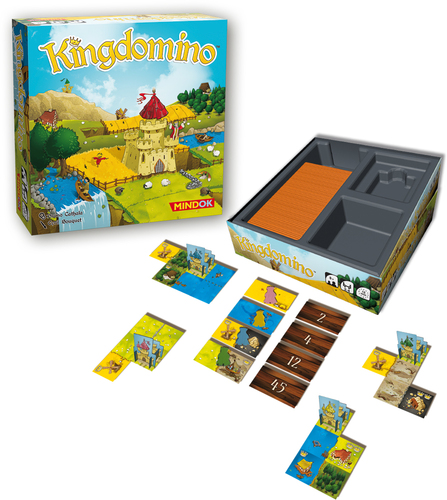
2. Sushi Go!
Sushi Go! is pretty well known by now, but it still remains to be said that there are many things go-ing for it. First off, the cards are absolutely adorable – from a pair of emoji-grinning tempura, to a pudding that looks awfully bashful, they really do convey the fun and breezy nature of the game. The way Sushi Go works is as a fast but light card drafting game played across three rounds. Each round you pick a card from your hand to keep, show it to the other players, then pass the rest to your left, continuing to do this until each player has a full hand. Different cards have different powers – for example, tempura and sashimi are only worth points if you have more than one of them, whilst wasabi, when timed right, will triple the score of other nigiri – so picking the right combinations will determine your score. As you’ve probably guessed, the highest total point score across the three rounds wins. The combination of calculating your best card picks alongside those of other players, along with the different card powers means there’s a lot of spinning plates in this game. But understanding the range of powers is easy, and the process of drawing and passing cards is pretty quick, so this feels more exciting than overwhelming. Plus, the multiplication cards like wasabi are a good way to sneak in a bit of basic maths without your kids finding it too unpalatable. And if you’re looking for a good family party game, Sushi Go: Party expands on the original menu.
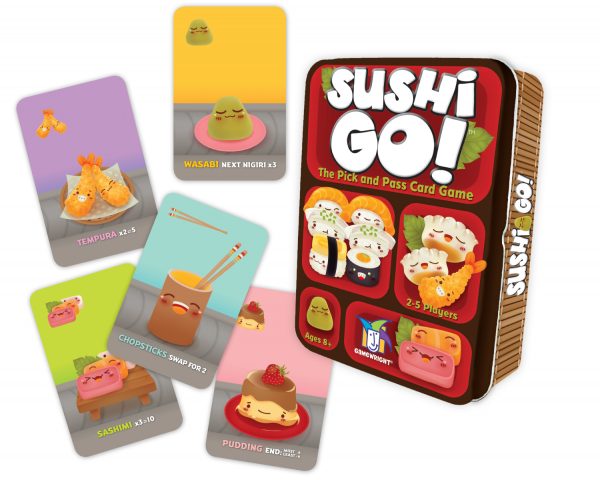
3. Ticket to Ride
Ticket to Ride breathes new life into toy train sets of the past. Here you’re racing against others to build as many long train routes across North America as possible, with each route worth different amounts of points – and yep, you guessed it – the highest point score by the end (i.e. whenever someone runs out of train pieces) wins. The three different actions are straightforward: either draw train cards that allow you to build routes, build a route by placing train pieces on the board, or pick up destination cards which give you harder routes to create but with larger pay off if you complete them. The fun here comes in trying to conceal your own plans whilst guessing others – you want to try and thwart other players’ route-building plans, whilst also not getting so sidetracked that your own go unfinished. Players need to keep focussed not just on their turn, but those of others, which makes it a great game to keep everyone engaged with. Whether you’re playing as a family or with friends, the replayability and potential for strategy makes this a perfect game to kickstart a board game night.
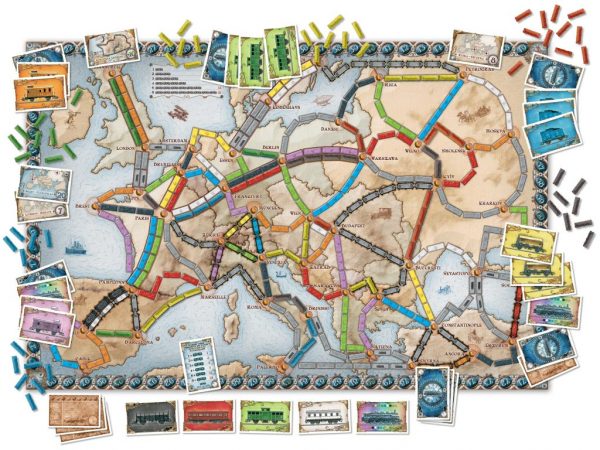
4. Beasts of Balance
Yes, we’re throwing our own hat into the ring – but only because we sincerely believe it’s a good family game! Beasts of Balance is a Jenga – meets – Pokémon stacking game, with beautifully designed physical pieces that connect to and impact the creation of a digital world. The basic gameplay of scanning and stacking artefacts is easy enough for children as young as five to get the hang of – but combined with changeable point scores and hundreds of beasts to discover, there’s enough tactical and exploratory play to engage everyone.
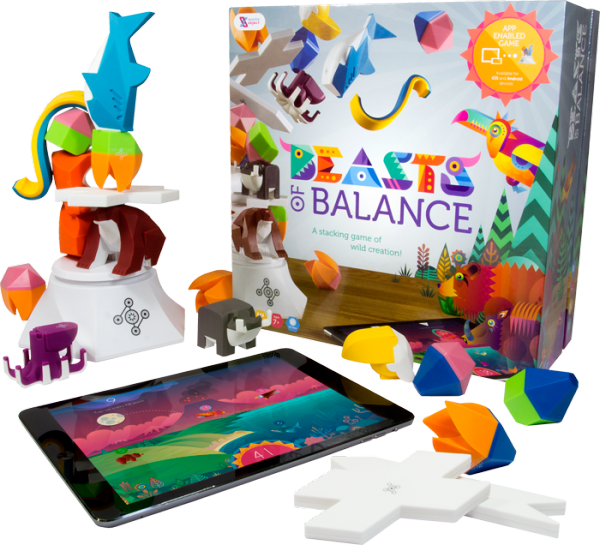
5. King of Tokyo
Mutant monsters and gigantic robots are almost always a good way to get younger children interested in something – and King of Tokyo delivers on both the crazy monsters and addictive gameplay. While it doesn’t exactly preach moral qualities like sharing and nurture (you are competing with each other to hurl as much destruction onto Tokyo as possible, after all), this easy Yahtzee-style game can be picked up and enjoyed by all. The only thing to watch out for when player with younger children is the potential for player elimination – but with each game being so speedy, no one is out of the loop for long.
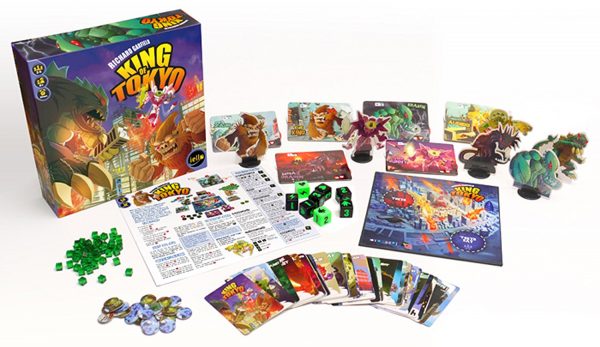
6. Blokus
This game is a little more abstract – it doesn’t have a clear theme like the trains in Ticket to Ride, or Sushi in Sushi Go – but it’s nevertheless a great family game. It’s even won a Mensa Select award! Part of the beauty of it is that there is essentially only one rule: to place your tiles so that only the corners touch. As you place tiles on the board, you’re generally trying to branch out and claim space so that you can use as many of your tiles as possible – but the specific ways you do this will vary from game to game, which makes it great for replaying. With simple, colour-coded pieces and an easy rule-set, kids as young as 5 can play Blokus. It makes strategic thinking fun and accessible, so choose this if you want to boost your kids’ lateral thinking!

7. Magic Maze
You and your fellow adventurers have lost your weapons…so naturally, it’s time to go raid a mall and get them back, right? Well, this is the premise for Magic Maze, which has two unusual twists that make it worth playing. Number one: it’s a cooperative game – but you can’t communicate with other players. (Yeah, we know this sounds counterintuitive, but bear with us.) Number two: you don’t control a character, but a direction (up/down/left/right) that they move in. This makes Magic Maze different from a lot of other grid movement games, so it’s quite refreshing to give a go. You need to move across tiles to explore new areas of the mall and find the right shops before time runs out, but since each player can only control one direction, you really are working together to make sure your plan succeeds. The fact that you may not all have the same plan also makes the game rather amusing – planting the giant ‘do something’ counter in front of another player and using your most imploring puppy eyes may get them to do what you think is best for the team…but it may also result in them scratching their head in confusion and moving the counter the wrong way. Trying to focus on all the different characters on the board as well as the timer counting down keeps everybody focussed and keen to stay in sync, making it a great game to connect the family. The rule book also comes with extra rules and challenges you can add if you want to up the difficulty, so it also works well when played with adults solely too.
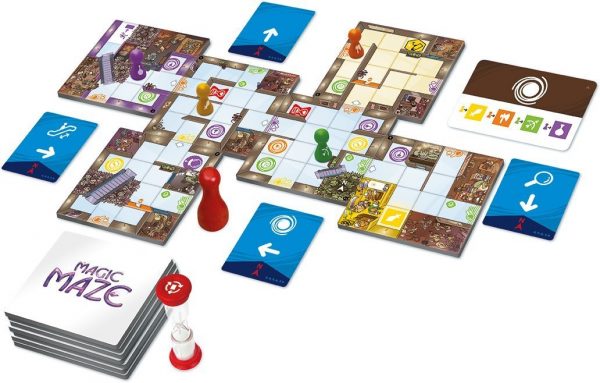
8. Tokaido
You may be playing competitively in Tokaido, but the atmosphere of the game still feels wonderfully zen. The game operates around the rule that players can move as many spaces as across the board as they like as they cross the East Sea Road, but no players can be in the same spot as each other (a bit of space always helps with serenity, no?). All the game parts are beautiful, whether they are coins you can use to make temple donations, or the illustrations of foods you can choose at an inn – so if you’d like a relaxing board game to play at home, Tokaido may be the one for you.
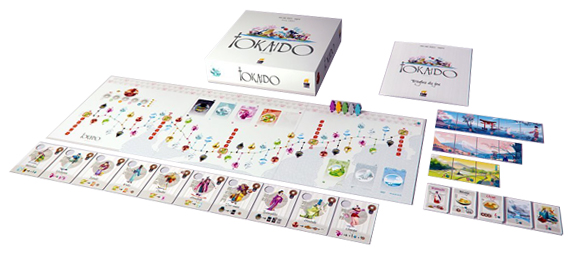
9. Santorini
With Santorini, the steps are simple – stack your buildings, and the first person to create a three storey building wins! You can pretty much pick up the essentials on how to play this game in 30 seconds – considering that’s even faster than a microwaveable meal, that’s pretty impressive in our books. Interesting elements are introduced by the different thematic gods and heroes you can play as, which each have different powers that keep the game exciting for older players. For example, if you have the god Circe, you can hijack opponents’ workers and make them do your bidding on your turn if they don’t neighbour each other. It’s not just your god that influences the way you play, but other players’ gods too, which is great for keeping things interesting. As a game can be played in 10-20 minutes, this would be a great starter family party game – or just a good way to start off family board game night.
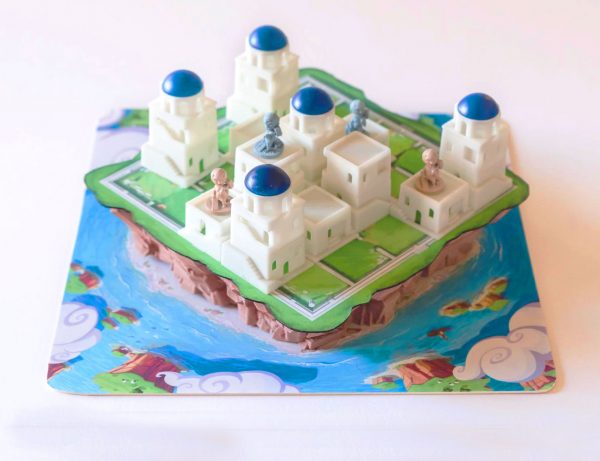
10. Mr Lister’s Quiz Shootout
This game may have some dubiously alcoholic-looking beverages pictured on the cards, but it’s definitely a game that’s suited for families! Mr Lister… is a team trivia game, so it works great as a family party game. The question-level isn’t too difficult, though some may be harder for children under 10 – but since you also need a host to play Mr Lister, you can always let the youngest have a go dealing out the questions and still be involved in the game!
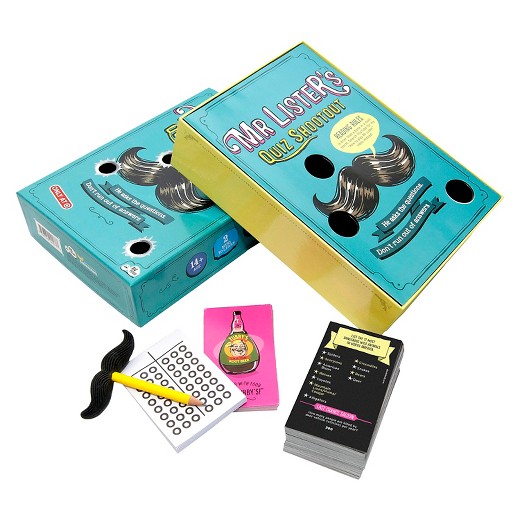
11. Spinderella
If you have very young children, Spinderella is a good game to go for. The aim is to get your ants from one side of the forest floor to the other without any spider scooping you up and taking you back to the starting line (don’t worry, no ants are harmed in the playing of this game). Whilst younger children probably won’t play very strategically, there is definitely room for older players to take more considered turns when playing with friends. So, for the ability to play Spinderella at different levels, we’ve included it as one of our best family games. Plus, it doesn’t hurt that the game is designed so that the ants will physically spring up into the spiders’ reach if you get caught – unsurprisingly, younger children find that really fun to watch.
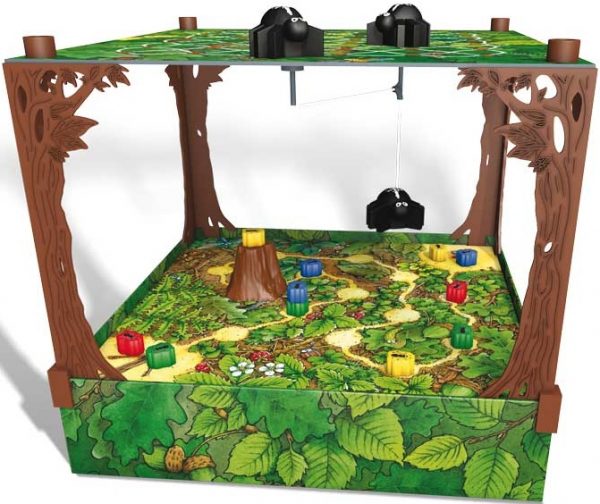
12. Sleeping Queens
This game takes your typical Queen, Joker, and King cards…then gives them some personality, and adds some knights and dragons to the mix! As the name suggests, you’re trying to awaken a group of sleeping queens by choosing the best card to play. There’s enough luck involved that kids as young as 5 could probably enjoy it (there’s a touch of arithmetic involved, but you can always simplify the game for younger players), but still enough card-choosing involved to make it fun for parents too.
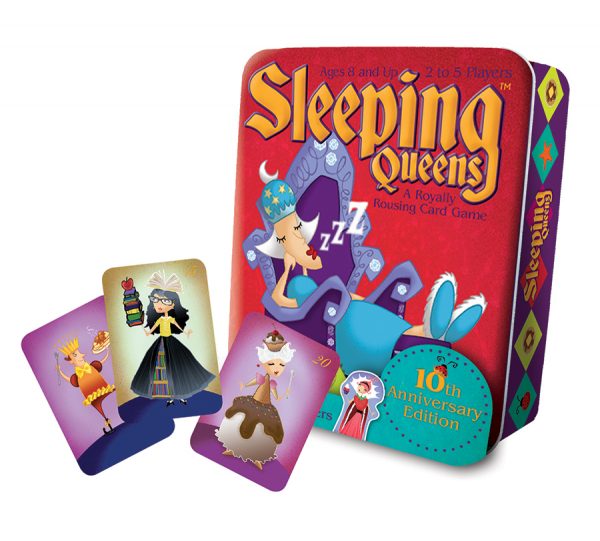
13. Fabled Fruit
For something a little more unusual, look no further than Fabled Fruit. The first play-through is quick and easy enough to pick up – and by itself, would probably be nothing spectacular. But the brilliance of the game comes through upon replaying, as each additional playthrough alters the game and builds complexity. What’s more, unlike a legacy game, there is no limit to the number of replays you can go through – you can ‘save’ or restart a game from scratch whenever you choose, and the number of times you play doesn’t diminish the number of times you can uncover new ways to play the game. This largely works through the appearance and disappearance of locations within the game, which naturally change the way you play the game and make it continuously fresh and fun. As it’s easy to start off playing and set up it’s a perfect family game – you can build up the difficulty (and fun!) gradually, so everybody picks up the game together.
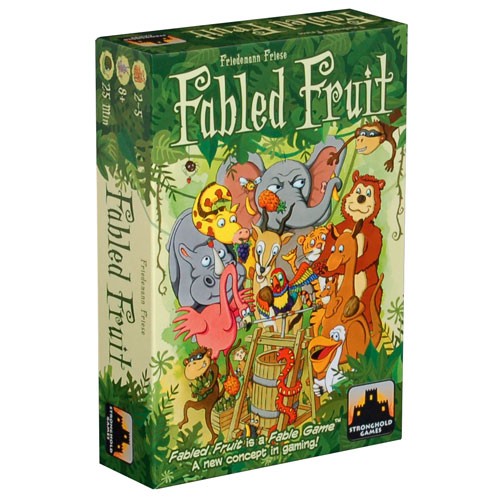
14. Forbidden Desert
For our final pick, we’ve chosen Forbidden Desert. Being stuck in a dangerously stormy blur of sand has never been more fun. Aside from the set of actions all players can undertake (move, clear sand, flip a tile, or collect a part), each player has a unique set of skills that they must use together with other players in order to collect the parts of their flying ship and escape the desert. Levels of difficulty can escalate very quickly, as each turn players must draw cards that often either build up the storm intensity, or make you lose precious water. Still, the fact that you’re all on the same team makes this challenge more of a fun and exhilarating thing rather than soul destroying (though you will probably learn to detest ‘sun beats down’ cards pretty quick). Look at it this way: if one person fails, the whole team fails – so you won’t have to worry about people getting bored whilst sitting out turns! And the little physical ship you can put together at the end is pretty cool too, so if you do escape you’re doing it in ~~style~~.
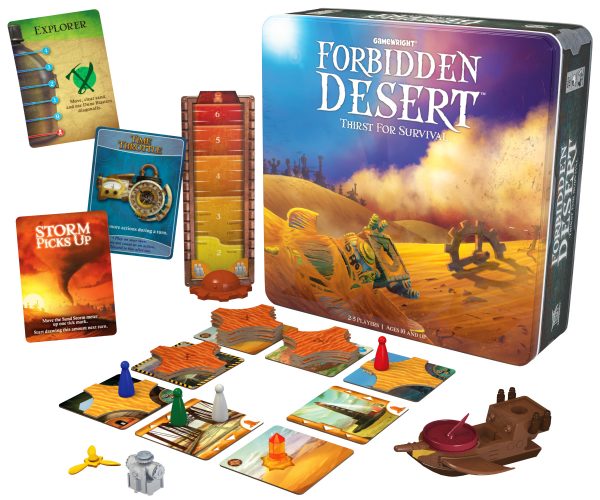
That sums up our list of best family games – if you like the sound of any of them, share this blog post on Facebook or Twitter!


